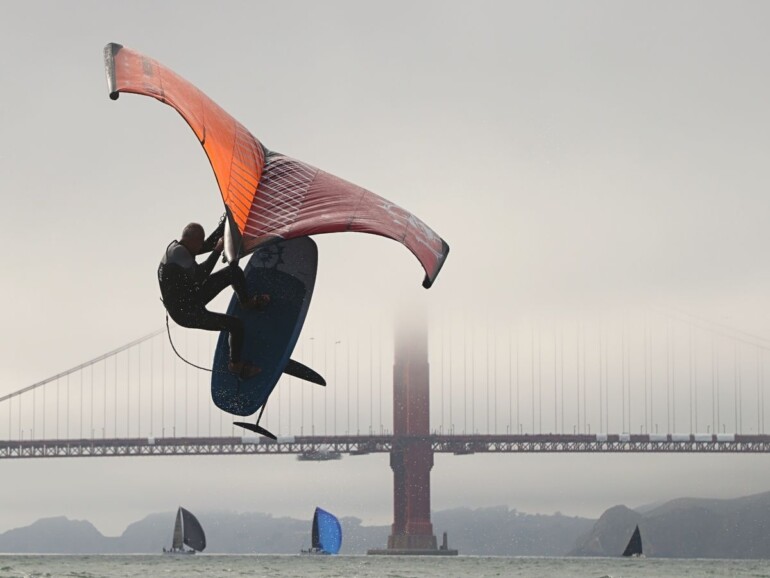For many, the 50 shades of blue and frothy whites of the Bay are a mere backdrop of life. The sometimes mirror-flat, sometimes churning and yearning water is a focal point for multi-million dollar homes, restaurants and walking paths along its shores. But for others it’s a playground. According to celebrated author, and former editor of Sail Magazine, Kimball Livingston, “San Francisco Bay is the windiest patch of water on the blue planet where people actually like to sail.”
Like clockwork, the breeze shows up in the spring and wanes in the winter. During the winter, wind addicts go into withdrawal, desperately waiting for the prevailing sea breeze to return and often do unusual things, like clean out the garage. March brings back fierce spring winds, and all forms of sailors, kiters, wingers and windsurfers frolic in its glory. By April, regattas are underway as are preparations for the century old tradition of Opening Day on the Bay, which brings out yachty types on the last weekend of April to toast another season of gusts and lulls.
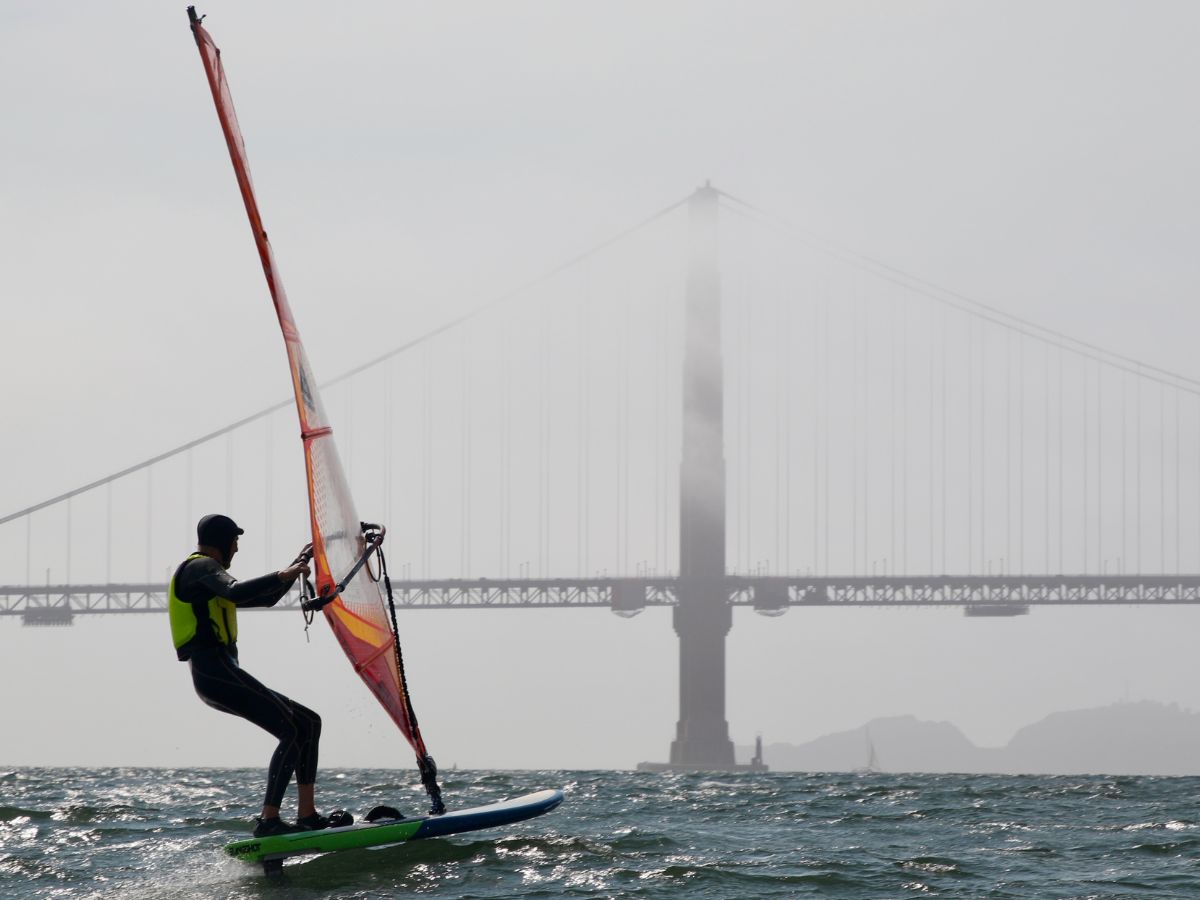
At this time of the year one might notice walls of thick roiling fog, cascading down the Marin Headlands, blanketing Sausalito in heavy droplets of mist accompanied by the deep baritone of Bay fog horns. It’s also when a certain itch manifests in the Bay Area sailing community as they reach for wetsuits, Gore-Tex and fleece, in preparation for an exhilarating afternoon of speed. Once that elusive fog burns off, the resulting flurry will blast through the Golden Gate like nobody’s business, transforming the mile-wide gap between San Francisco and Marin into a white-capping playground for yachties and their board sailing brethren, the kiteboarders and wingfoilers.
What is Special about San Francisco Bay?

Photo by Bryan McDonald
Zach Berkowitz grew up sailing on the Bay, and as a past world champion racer, explains why San Francisco summer months offer up some of the most insane sailing conditions in the world. “Wind on the Bay is created by a pressure gradient between the pressure out in the Pacific and the Sacramento Valley which consists of two components: the thermal gradient and the atmospheric gradient,” Berkowitz says. “During the winter, the temperature difference between the valley and the bay is negligible, therefore winter winds are determined mostly by the atmospheric pressure gradients, and are typically lighter.”
Berkowitz continued, “During the summer, the atmospheric gradients — storms — weaken, but the thermal gradients intensify. Temperatures may range from the 50’s coast side to 100 degrees inland, creating a large thermal gradient between the San Francisco and the adjacent ocean (high pressure area) and the Sacramento Valley (low pressure area) that brings daily winds on the Bay nearing 20 to 25 knots.”
This seasonal — rinse repeat — cycle has been happening here for centuries. The Gold Rush brought thousands of people to the Bay, including some salty sailors who opened the first yacht club west of the Mississippi. west of the Mississippi. The San Francisco Yacht Club opened in 1869, near Mission Rock in San Francisco. A few years later the club moved to Sausalito, in the building now home to The Trident restaurant, and eventually landed in Belvedere. This confuses the unfamiliar, who will be told, “Yes, the San Francisco Yacht Club is not in San Francisco it’s in Tiburon.” Many clubs followed, including The Corinthian Yacht Club (Tiburon) in 1886, and the Encinal Yacht Club (Alameda) in 1890.
Today, amongst the thirty or so clubs on or around the Bay include the St. Francis Yacht Club (actually in SanFrancisco), the Richmond Yacht Club and the San Francisco Yacht Club are well known for offering race-forward programming. Like other Bay area yacht clubs, they also offer casual racing, like beer-can race nights, as well as opportunities for kids and adults to learn to sail.
Share the Bay
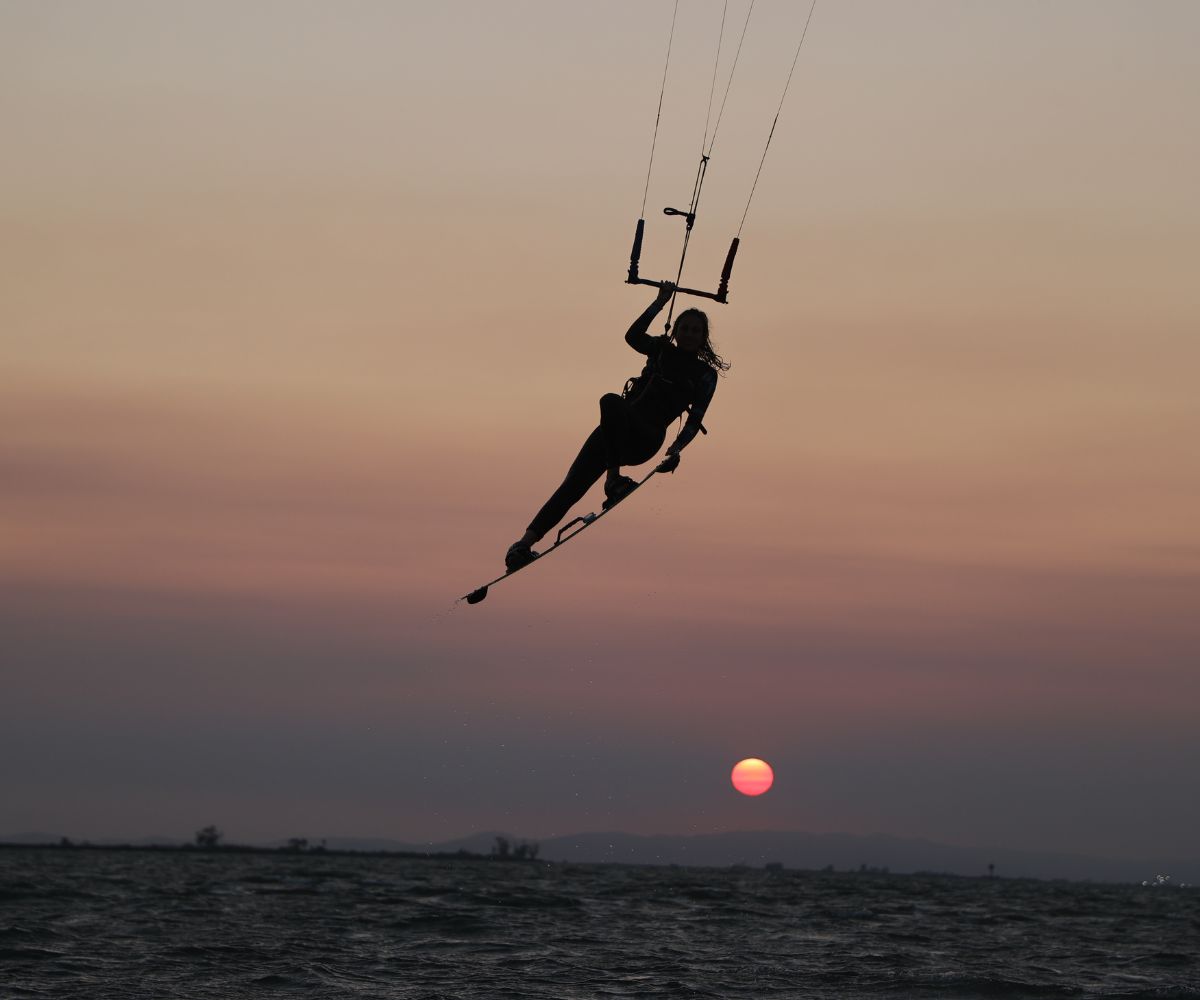
Photo by Bryan McDonald
Beside yacht clubs, community programs committed to enabling access to both the sport and the Bay also dot the shores. Programs such as Treasure Island Sailing Center, Alameda Community Sailing Center, and Sailing Education Adventures offer learn-to-sail programs for those eager to take their own helm. “The Bay should be a resource enjoyed by everyone, regardless of socioeconomic status, gender or race,” says Stephanie Martin, a competitive sailor, volunteer with Treasure Island Sailing Center and board advisor to the St. Francis Sailing Foundation. “I grew up in Boston and no one in my family sailed. Having access to local programs when I was young shaped my life in so many positive ways. I sailed in college, met and married a sailor, gained the knowledge bank to be hired to work on the America’s Cup and now have an amazing community of sailing friends worldwide. Giving back to the sport that has given me so much is really important to me, so I’m thrilled to work with groups that open up the sport to a wider Community.”
San Rafael’s Ina Ngongoseke-von Wunsch has three energetic young boys: Nyanza (14), Lyuba (13) and Sonda (10). She got her kids involved in sailing early on, encouraged by the programming at Treasure Island Sailing Center (TISC). “All my boys have been on the TISC race team since they were six years old and by 2018 were all part of the racing program — they love racing, and TISC being a community sailing program. Its priorities, I believe, are different from other programs. We are very connected to, and grateful for TISC, having trekked out there for so many years. Sailing was the number one thing the boys did all summer, and often fall and spring as well.”
Speaking of the diversified craft offerings, sailing has evolved from beyond what is known as “sit-down-sailors” to high-speed flying foils. In the early ‘70s windsurfers dotted the Bay, then came kite surfing and now winging. And much of the innovation has taken place right here. For instance, the St. Francis Yacht Club supported the beginning of one of the most exciting and challenging classes in sailing in the past twenty years — kite foil racing, a new Olympic discipline for the Paris Games in 2024. Kite foil racers can achieve speeds of up to 45 mph, and are now in the company of wing foilers, a relatively new high-performance water sport that has been enthusiastically embraced on the Bay by all ages and abilities. The St. Francis Yacht Club is also paving the way for local wingers to take this new sport to the top, hosting the first-ever Spring Wingding Pacific Coast Wings Foil Championships April 14-16, 2023. Yep, “Spring Wingding” is the event’s official name.
Attracting Top Talent
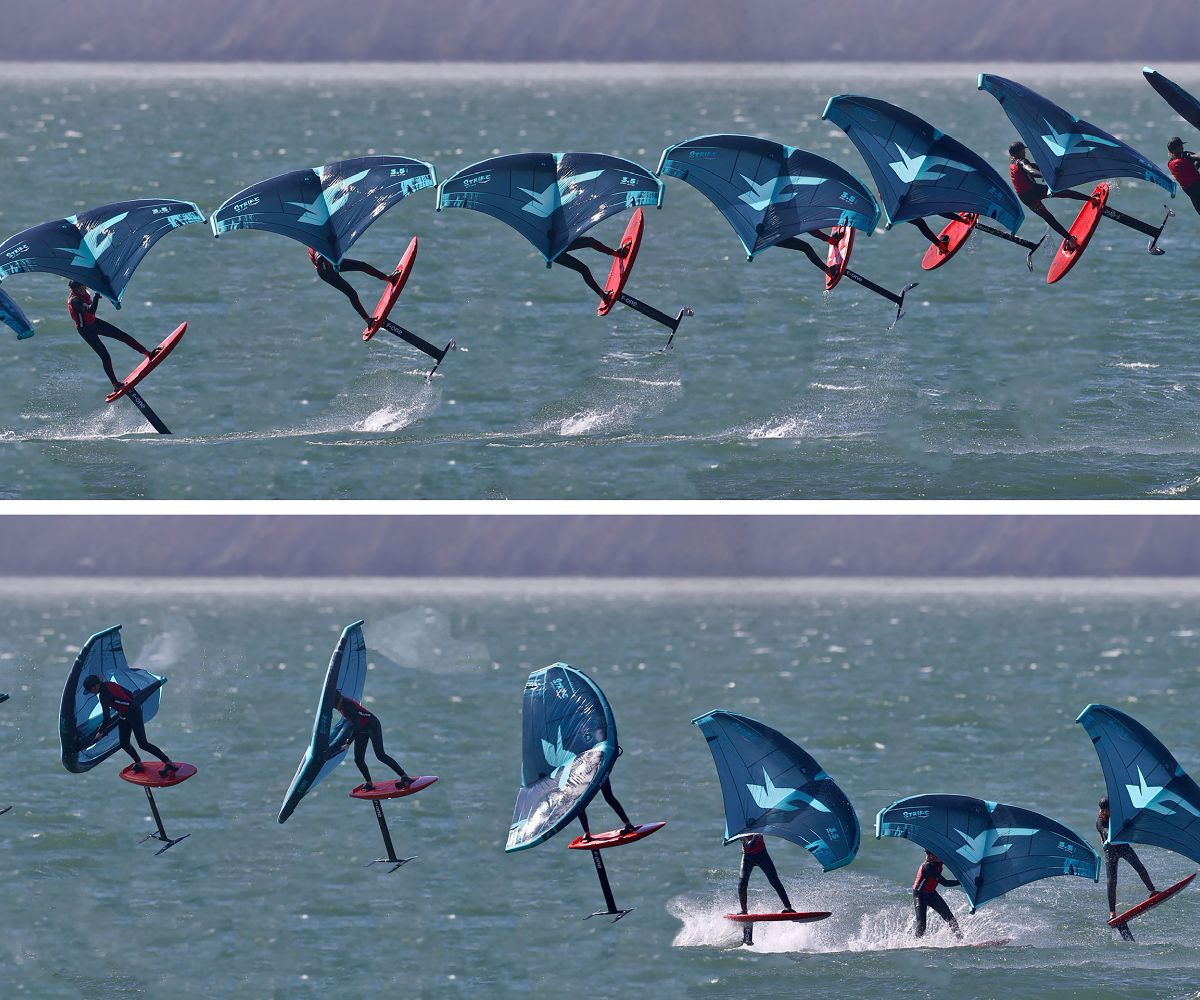
Photo by Bryan McDonald
These summer breeze conditions are why sailboat racers want to be here, challenged by the high winds and powerful shifting currents. Every year, world and national championships are hosted on the Bay by local yacht clubs. In 2013, as many remember, the Golden Gate Yacht Club played host to the oldest sailing and most prestigious regatta in the world, the 34th America’s Cup. This year, the 505 World Championships will be hosted by the St. Francis Yacht Club from September 23 to October 1. Mike Martin, an eleven-time 505 World Champion and Marin resident (and husband of Stephanie quoted earlier), believes that the Bay is the most reliable place on the planet for solid wind.
“You can count on wind pretty much every day from April through mid-October,” Martin notes. “Not just sailable wind, but challenging conditions with strong breeze, geographic shifts, and complex current patterns. If you hold a championship regatta on the San Francisco Bay, the winner will definitely be the best sailor.”
Local Olympians who cut their teeth in Bay Area youth sailing programs include Pam Healy, John Kostecki, Paul Cayard and Russ Silvestri, who learned to sail in arguably the toughest conditions in the country. Sailors from other parts of the country fantasize about traveling to race on the Bay, half terrified as to what they may encounter, but mostly thrilled at the prospect. It’s a challenging and humbling venue to sail, no doubt.
“It’s so windy here that you get proficient at a young age, quickly,” Pam Healy, 1992 Olympic Sailing Bronze Medalist and a Director at US Sailing, recalls. “By the time I went to college, my boat handling was much better than everyone else because I had learned how to use my timing and body weight early on. Now when I teach sailing, I love that we have a prevailing wind, it’s consistent and makes it much easier to learn. One of my favorite things is having a boat full of female students heading up to the Golden Gate Bridge on a windy day, and then when we round the mark and someone new to sailing sets the spinnaker (an intimidating move for beginners), it’s like we’ve all just climbed Everest.”
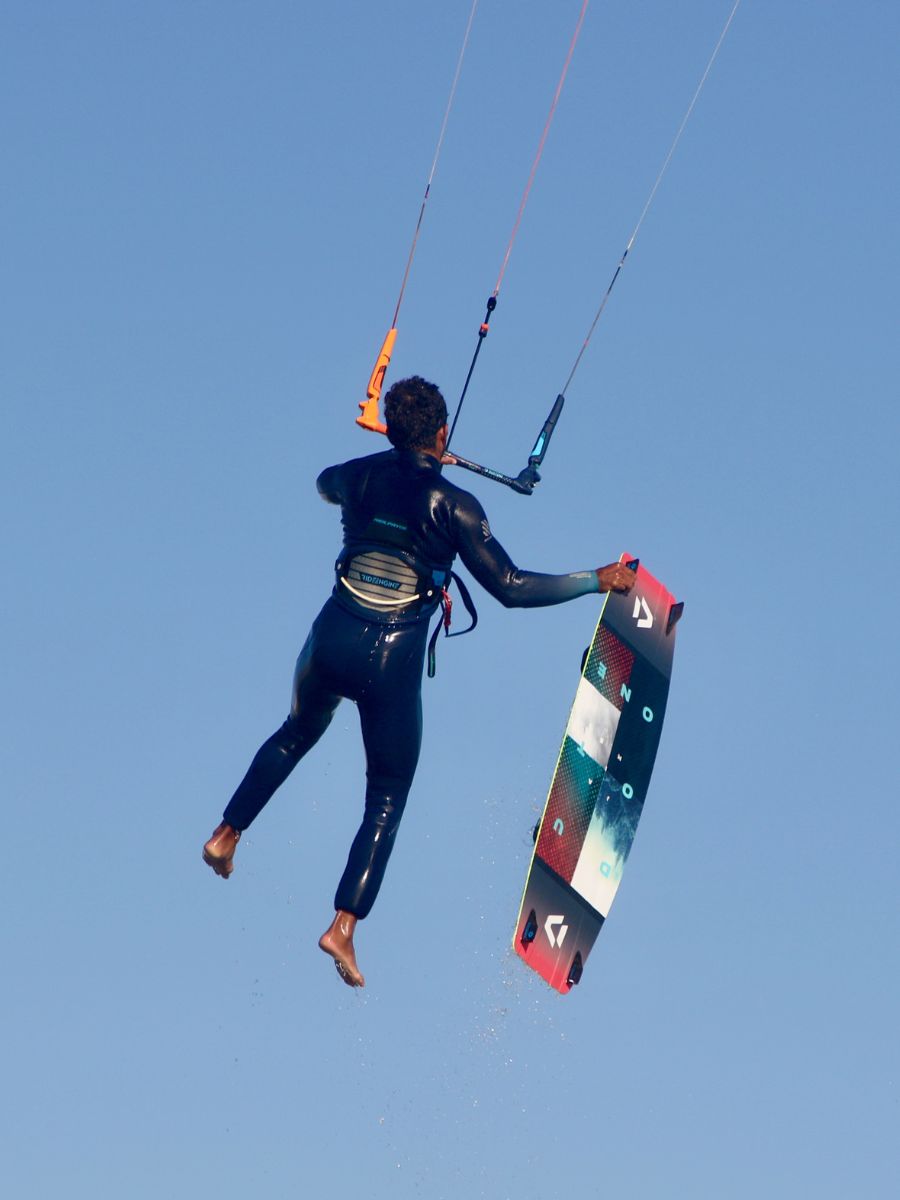
Photo by Bryan McDonald
Lifelong Activity or Life Prolonging
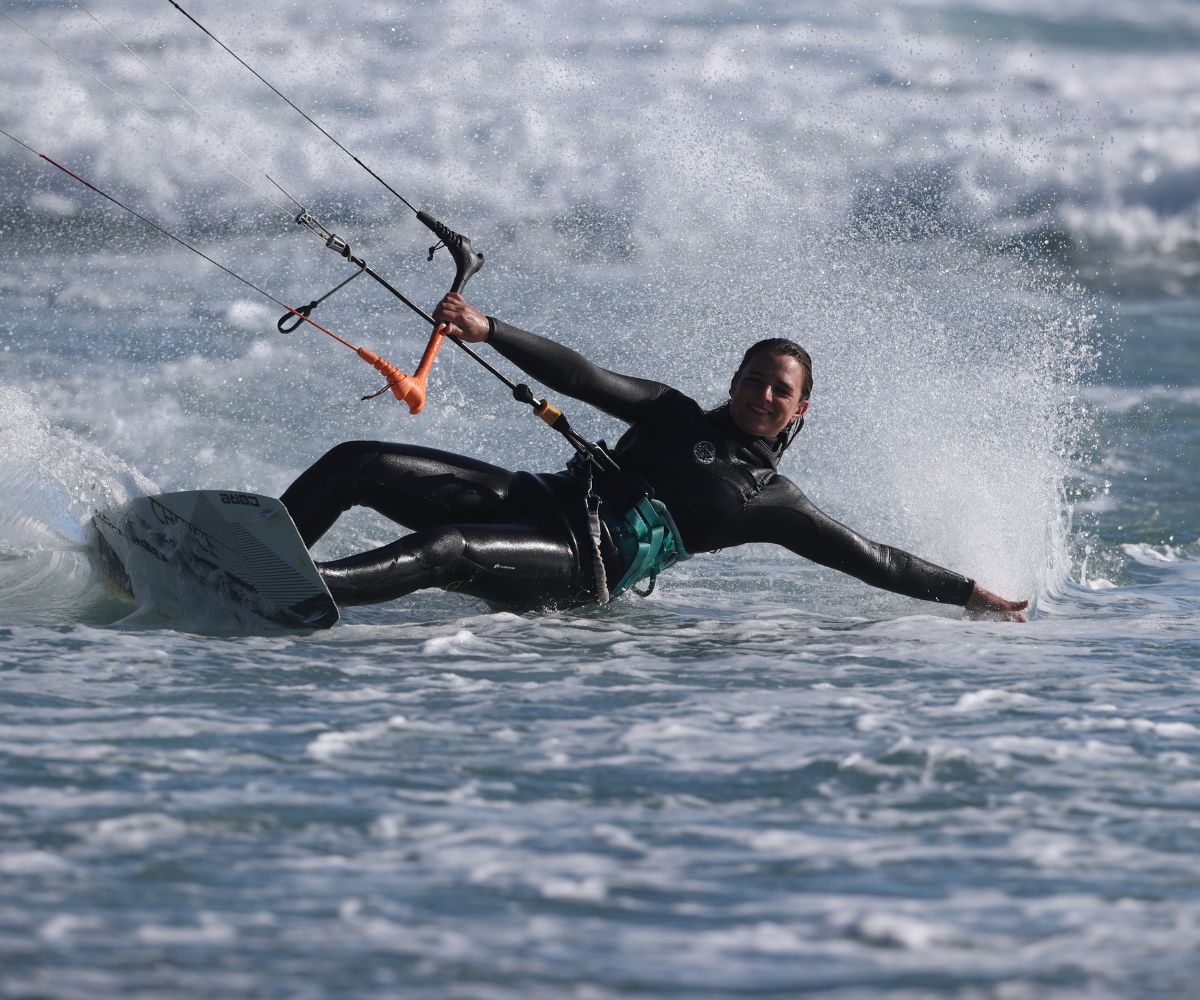
Photo by Bryan McDonald
Is sailing a sport or is it a lifestyle? As mentioned above there are various degrees of athletic prowess needed for the various crafts. Often cited health benefits include increased muscle strength and agility, stress relief and mental wellness, better concentration and improved cardiovascular health. While these hold true for fair weather sailors, by the time a sailor is competing in major competitions — including the America’s Cup — their fitness level is on par with any hardcore athlete.
Famously a family sport, kids who are brought up sailing have access as well as a level of comfort that can, and does, propel them into the sports spotlight. For example, the Heineken family of Larkspur, has earned nearly a dozen world championship titles between siblings Johnny and Erica — yet, still no sponsorship by Heineken!
Youth programs can start very early with boats that are more like floating buckets and lessons generally geared towards presenting the fun aspects of the sport everyone should understand about wind, currents and tides. What other sports connect us so closely to our planet’s ebbs and flows? It doesn’t stop there. Being a sailor means being on the water and recognizing the significance of seeing a whale in the Bay and the return of the harbor porpoise (these tiny cetaceans have returned after decades of being absent) as well as dolphins, all the while looking for that elusive shark fin.
The benefits of all of the above, is perhaps best illustrated by the life mariners such as Hank Easom, who crossed the bar on February 14, 2023, at age 88. Born and raised on the Bay, sailing was a life-long pursuit for Hank, one of the longest-standing masters of the sport on the Bay. He was the consummate Corinthian sailor, on and off the water, honored multiple times as Yachtsman of the Year. On February 4, 2023, just 10 days before his passing, Hank sailed his final race in the Golden Gate Yacht Club\ Midwinters. A mentor to numerous Bay sailors, in his last race Hank was first to finish, first in division and first overall. It’s hard to think of other sports or pursuits one can do into your 80s and 90s.
A Tradition Lives On

Photo by Bryan McDonald
Opening Day, scheduled for April 30 this year, began in the early 1890s as a celebration of the first spring activities of local yacht clubs, coinciding with the manual opening of the drawbridge at Corinthian Island. The Corinthian Yacht Club (CYC) did not have its own protective seawall then, so its boats sought protection in the winter by anchoring in the enclosed lagoon, stretching from San Rafael Avenue in Belvedere to Main Street in Tiburon. Boats entered and left the lagoon by raising a drawbridge at the junction of Main St and Beach Rd, and the term “Opening Day” largely refers to the coming racing and cruising season.
In 1917, that informal celebration morphed into a more elaborate event organized by the Pacific Inter Club Yacht Association (PICYA), an umbrella organization that governs, educates, and provides programming for 105 yacht clubs throughout Northern California. Opening Day now includes a Blessing of the Fleet by several yacht clubs, and a Parade of Boats along the San Francisco City Front. An annual Opening Day theme to encourage boaters to decorate their boats is rewarded with trophies — this year’s theme is “Broadway on the Bay.”
A heart-felt tradition and a custom, the Blessing of the Fleet hails back to a time when fishermen had their boats blessed by a clergyman to ensure a safe and bountiful voyage. Prior to the Parade, the CYC anchors a club boat, the Aurora V in Raccoon Strait and its members can sail by to receive a blessing by ministers of multiple religious denominations. The St. Francis Yacht Club holds a similar blessing ceremony on its docks, complete with bagpipers who serenade the blessed boats as they head out to join the Parade.
Opening Day also comes with all the trimmings of a good party, on and off the water. The Parade can be viewed shore-side all along the City Front, Pier 39 being a favored viewing point. Renowned bars like Sam’s Anchor Cafe in Tiburon, with its sail-up dock, are go-to hot spots.
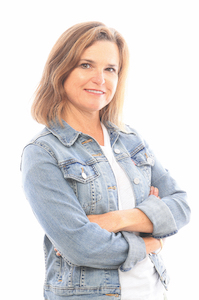
Mimi Towle has been the editor of Marin Magazine for over a decade. She lived with her family in Sycamore Park and Strawberry and thoroughly enjoyed raising two daughters in the mayhem of Marin’s youth sports; soccer, swim, volleyball, ballet, hip hop, gymnastics and many many hours spent at Miwok Stables. Her community involvements include volunteering at her daughter’s schools, coaching soccer and volleyball (glorified snack mom), being on the board of both Richardson Bay Audubon Center. Currently residing on a floating home in Sausalito, she enjoys all water activity, including learning how to steer a 6-person canoe for the Tamalpais Outrigger Canoe Club. Born and raised in Hawaii, her fondness for the islands has on occasion made its way into the pages of the magazine.

